IATL-funded Workshops
Paint A Mummy Portrait: Traditional Painting Techniques Workshop
With funding from an IATL pedagogical intervention grant Dr Helen Ackers organised two ancient painting technique workshops for Classics and Ancient History and Art History Undergraduate and Graduate students. The workshops were held on Wednesday 7th March 2018. They were led by Jevon Thistlewood Paintings Conservator at the Ashmolean Museum.
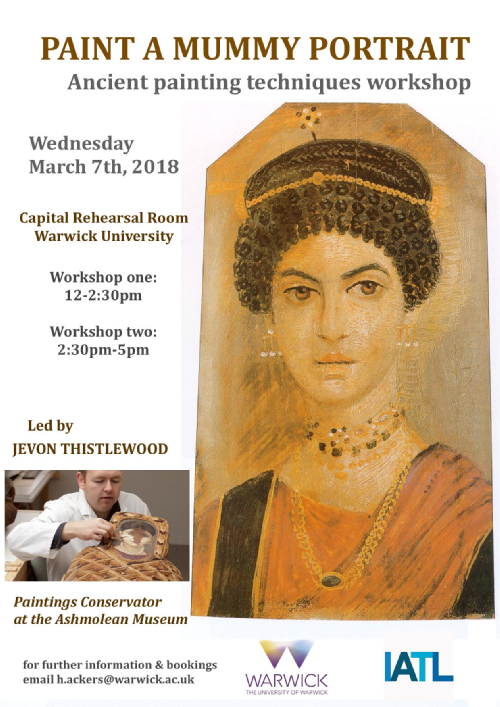
Each workshop began with a short introductory talk by Jevon, who explained the material we would be using and the three techniques we would attempt: tempera (egg based paint), encaustic (cold wax based paint) and hot wax. Jevon also provided some introductory background regards the research and evidence for the use of these techniques by the Roman artists who produced the painted mummy portraits. All the students were then provided with a lime wood board on which to paint their mummy portraits. They could also choose an example of a painted mummy portrait to copy. The remainder of the session was then spent attempting the three techniques under the guidance of Jevon who regularly interacted with the students answering questions both academic and practical.
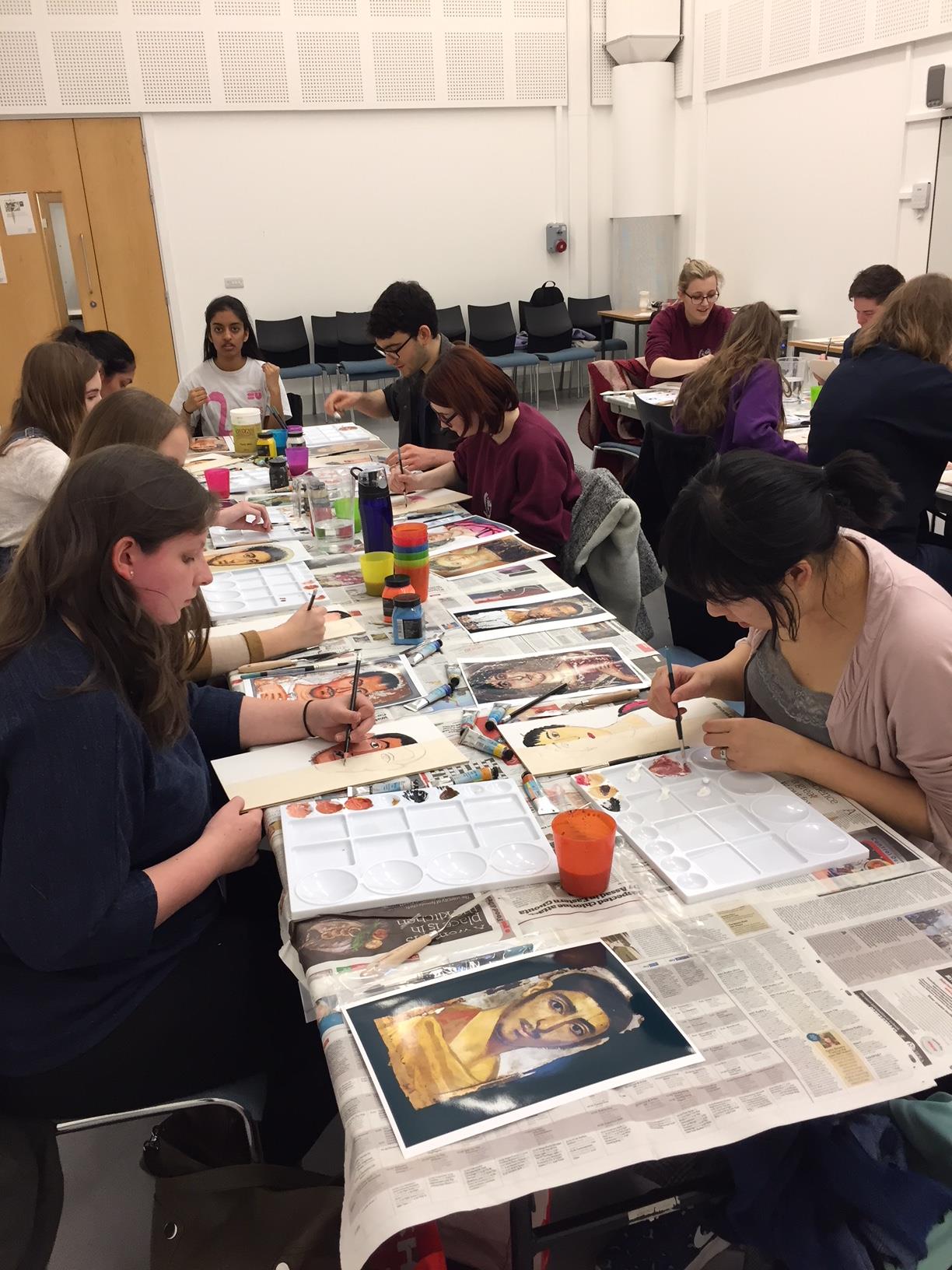
Both workshops were full with a total of forty participants. As with the Mosaics workshop organised by Professor Newby (below) feedback was excellent, here are some of the student testimonals:
Having attended the “Paint a Mummy Portrait Workshop”, I thought it was really interesting to gain some knowledge of the encaustic and tempera techniques that were used to create these portraits, and even better to be able to try our hand at creating our own portraits or just to experiment with the different painting materials and techniques. It was lovely to have the opportunity to engage with the art of the ancient world in a different way and in a relaxed atmosphere. Thank you!
Jacqui Butler, MA student Ancient Visual and Material Culture.
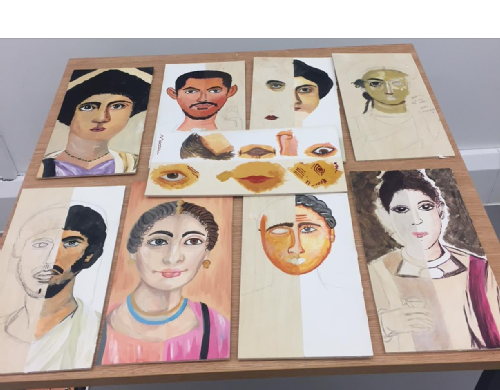
The painting workshop was a great opportunity to learn about ancient art in a very practical environment, studying materials and application and giving us a new perspective on the subject. It was a fun and engaging experience, and helped enhance my understanding of the production of mummy portraits in Roman Egypt. I’m grateful to have been able to participate, and found the workshop complemented my modules and allowed me to appreciate ancient art in a new context.
Alice Clinch, MA student Ancient Visual and Material Culture
Mosaic Workshop
With funding from an IATL pedagogical intervention grant Dr Zahra Newby organised a Practical Mosaic workshop for students taking the module 'Domestic Space in the Roman World'. The workshop was held for 3 hours on Wednesday 26th February and was run by Lawrence Payne of Roman Mosaic Workshops.
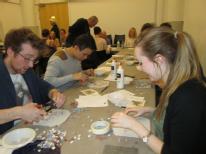
Before the workshop Lawrence put up a page on his website explaining to students what they should expect from the workshop. The workshop itself ran for 3 hours; Lawrence gave an introductory lecture on what is known about the techniques of roman mosaic working, before allowing students to choose one of two designs to create themselves: a bird or a 2-strand guilloche. Although we used modern pva glue rather than mortar, the processes of laying out and positioning the tesserae followed Roman techniques. The aim of the workshop was to allow students to experience for themselves the processes involved in creating complex mosaics, including issues such as the time involved, the practicalities of team working to create larger mosaics, and the possibility for errors to arise.
Feedback forms suggest an overwhelmingly positive response to the workshop; in particular, students commented that it made them realise the time involved in creating mosaics and the logistics involved in creating complex designs. In light of the success of this workshop I am applying to IATL for further funding to incorporate more practical sessions into a pilot version of my module 'Art and Architecture in Asia Minor' to evaluate the success of different types of sessions and the ways these might be incorporated into the module in future years.
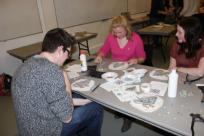
A 35 minute video from the session is available below:
